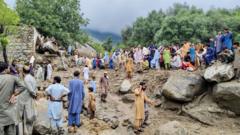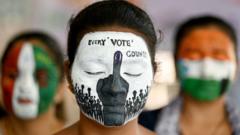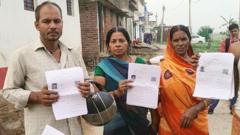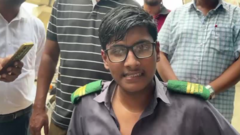An analysis of the Kumbh Mela crowd crush reveals that official death tolls may be significantly underestimated, with many families receiving varying compensation amounts. Despite receiving payment, some families maintain their relatives died in the tragic crush, not from health issues as suggested by officials.
Uncovering the Truth: Discrepancies in Kumbh Mela Death Toll and Compensation
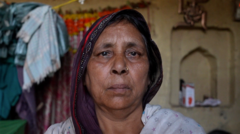
Uncovering the Truth: Discrepancies in Kumbh Mela Death Toll and Compensation
A BBC Hindi investigation reveals a higher death toll from the Kumbh Mela crush than officially acknowledged, highlighting mismanagement and discrepancies in compensation distribution.
A recent investigation by BBC Hindi has uncovered alarming discrepancies surrounding the death toll and compensation given to families following the tragic crowd crush at the Kumbh Mela, held in Uttar Pradesh in January. While the official death count stands at 37, the investigation found evidence suggesting there are at least 44 additional fatalities linked to the incident.
On March 25, plain-clothed police officers from Uttar Pradesh traveled to Bihar to deliver cash to families impacted by the tragedy. Among those was Tara Devi's family, who received 500,000 rupees ($5,758) after her death during the event's chaotic crush. The state government claims to have compensated 35 families for their losses, issuing payments directly to bank accounts, yet many distressing stories indicate systemic neglect and inconsistencies with official records.
Families recounted being pressured to sign documents indicating deaths were due to health issues, despite the clear circumstances of the crush. BBC’s interviews with over 100 affected families across multiple states revealed at least 82 verified deaths, further complicating the state's assertions around the incident.
Notably, many families express frustration in dealing with a labyrinth of bureaucracy. Individuals like Dharmraj Rajbhar received partial compensation for both his wife and daughter-in-law, yet faced challenges when claiming the promised full amount of 2.5 million rupees each. Many families assert solidarity, as they navigate the weighty emotional burden of loss compounded by the struggle for recognition and support.
The investigation also highlighted that several families attempting to claim compensation have received nothing at all, raising questions about the fairness and criteria of the compensation process. Reports of at least 18 families whose losses went unrecognized demonstrate a systemic failure in government accountability.
In addition to the official recognition issues, locals reported encountering multiple crushing incidents throughout the festival, undermining claims made by state authorities that only one significant crush occurred at the Sangam nose location. Documentation and eyewitness accounts support the notion that there were indeed multiple deadly incidents occurring simultaneously.
Despite the Uttar Pradesh government acknowledging the festival's significance—reportedly attracting over 600 million attendees—this investigation reveals profound shortcomings in public safety and disaster response protocols during large events. Families yearning for recognition of their loss face indifference, leading to disillusionment and devastating grief as communities continue to grapple with both the aftermath and the government's lack of acknowledgement regarding the full scope of the tragedy.

